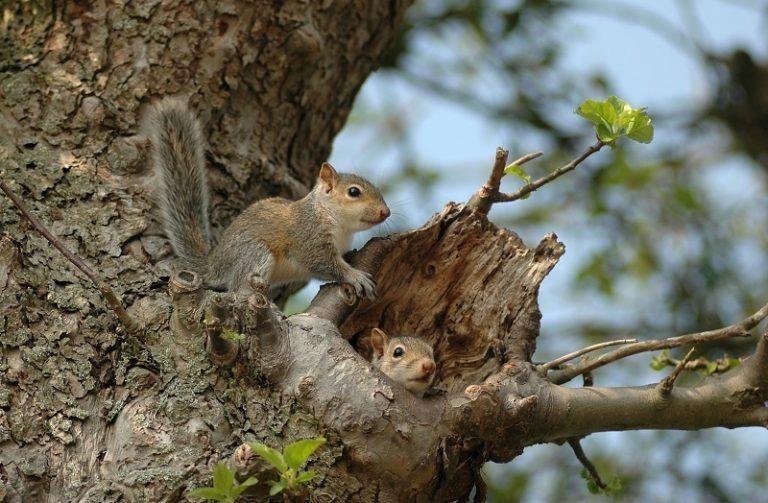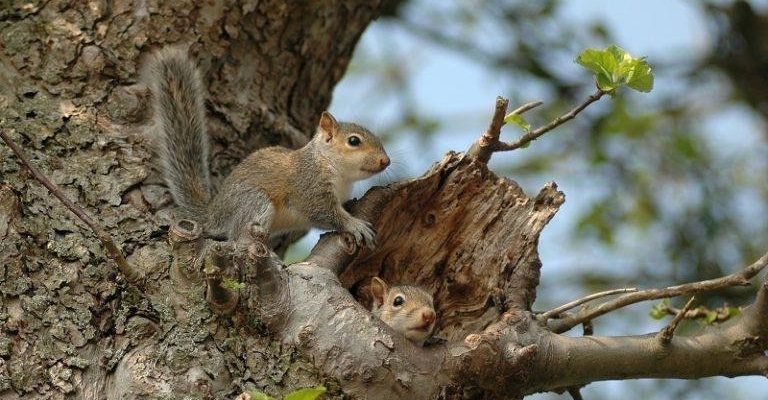
Think of squirrels as nature’s acrobats. They leap, climb, and dash around with such agility that it’s hard not to admire them. But behind the scenes, their survival relies heavily on their habitats. Just like us, they need food, shelter, and a safe space to raise their young. Understanding where squirrels live helps us appreciate not only them but also the ecosystems they’re a part of. So, grab your coffee, and let’s explore the different places where squirrels find their homes!
The Various Types of Squirrel Habitats
Squirrels can be found in a variety of habitats, each uniquely suited to their needs. Here are some of the primary types of environments where you might find them:
- Forests: Dense woodlands provide a perfect mix of shelter and food. Trees offer plenty of places to nest and forage for nuts and fruits.
- Urban Areas: Surprisingly, squirrels are quite adaptable. Parks, gardens, and even buildings can serve as homes, allowing them to thrive in cities.
- Grasslands: While not the most common habitat, some squirrels—especially ground squirrels—live in open fields, creating burrows to stay safe from predators.
- Suburban Areas: You’ll often spot squirrels in backyards, where they can easily access bird feeders and trees.
Each habitat has something to offer, and it’s fascinating to see how squirrels adapt to their surroundings. They’re not picky, which is part of what makes them so successful.
Types of Squirrels and Their Preferred Environments
Now that we’ve covered habitats, let’s talk about the different types of squirrels and where they prefer to live. There are three main groups: tree squirrels, ground squirrels, and flying squirrels. Each type has its own habitat preferences:
Tree Squirrels
Tree squirrels are the ones most people picture when they think of a squirrel. They live in wooded areas and urban parks, often nesting in tree hollows. Their strong climbing abilities help them evade predators. These squirrels love habitats with plenty of hardwood trees—think oak, maple, and hickory—because they provide food and safe nesting spots.
Ground Squirrels
Unlike their tree-dwelling cousins, ground squirrels prefer open grasslands and deserts. They dig extensive burrow systems to create nests and store food. These burrows help protect them from predators while giving them easy access to the surface to forage for seeds and plants.
Flying Squirrels
Flying squirrels are slightly different from other types. While they don’t actually fly, they have a remarkable ability to glide between trees. They thrive in forested areas, where they can use their gliding skills to move from tree to tree in search of food and shelter. Their habitat is often filled with large trees that provide ample space for gliding.
By understanding these differences, you can appreciate how diverse squirrel lives are and how they adapt to their specific environments.
How Squirrels Build Their Nests
So, how do squirrels create their homes? Nesting is essential for raising young, staying warm during winter, and escaping predators. Squirrels typically build nests called dreys, which are made of leaves, twigs, and other materials found in their environment.
- Location: They prefer to build their nests high up in trees, away from ground predators.
- Materials: Squirrels collect soft materials like moss, feathers, and fur to make their nests comfortable.
- Design: A typical drey is a round, cozy structure with an entrance hole for easy access.
Building these nests takes time and effort, but it’s worth it for the safety and comfort they provide. Plus, squirrels often reuse their nests year after year, adding new materials as needed.
Seasonal Changes in Squirrel Habitats
Squirrels are skilled at adapting to seasonal changes, which can affect their habitats significantly. In spring and summer, they are highly active, foraging for food and raising their young. As the weather starts to cool in fall, squirrels begin to prepare for winter.
During this time, they focus on gathering food—like acorns and nuts—to store in their nests. You might even spot them burying snacks in your backyard! In winter, they rely on their fat reserves and food caches to survive. Their nests, which keep them insulated and warm, become vital during these colder months.
Understanding their seasonal habits can give you insights into what squirrels might be doing in your area throughout the year.
The Role of Squirrels in the Ecosystem
While it may seem like squirrels are just cute animals we see in our neighborhoods, they play a crucial role in the ecosystem. They help with seed dispersal by burying nuts, which can grow into new trees if forgotten. Their foraging habits contribute to plant growth in the areas they inhabit.
Here’s the thing: squirrels are also a food source for various predators, including hawks, owls, and coyotes. By existing in the food chain, they help maintain balance within their habitats. So, the next time you see a squirrel scurrying by, remember that they’re not just a fun sight; they’re an important part of the natural world.
How Habitat Loss Affects Squirrels
Unfortunately, as cities expand and natural habitats are destroyed, squirrels face significant challenges. Urbanization leads to habitat loss, which can impact their populations. Less green space means fewer trees and food sources, making it harder for squirrels to thrive.
Moreover, roads and buildings create barriers that can lead to accidents. Squirrels may struggle to find safe routes between their habitats. Conservation efforts are essential to ensure these delightful animals can continue living alongside us.
Being aware of these challenges can help us appreciate the importance of preserving habitats for all wildlife, not just squirrels.
In conclusion, understanding where squirrels live and how they adapt to various habitats gives us a deeper appreciation for these lively creatures. From the towering trees of vast forests to the cozy corners of our backyards, squirrels have carved out a place for themselves in many environments. They’re not just cute animals; they’re integral to maintaining the ecological balance of the spaces they inhabit.
Next time you spot a squirrel, take a moment to think about its journey. Where did it come from? What type of habitat suits its needs? By exploring their habitats, we’re better equipped to protect these little acrobats and, ultimately, our shared environment. So, let’s keep our eyes open and our parks green—who knows what fascinating squirrel stories we might uncover next!

